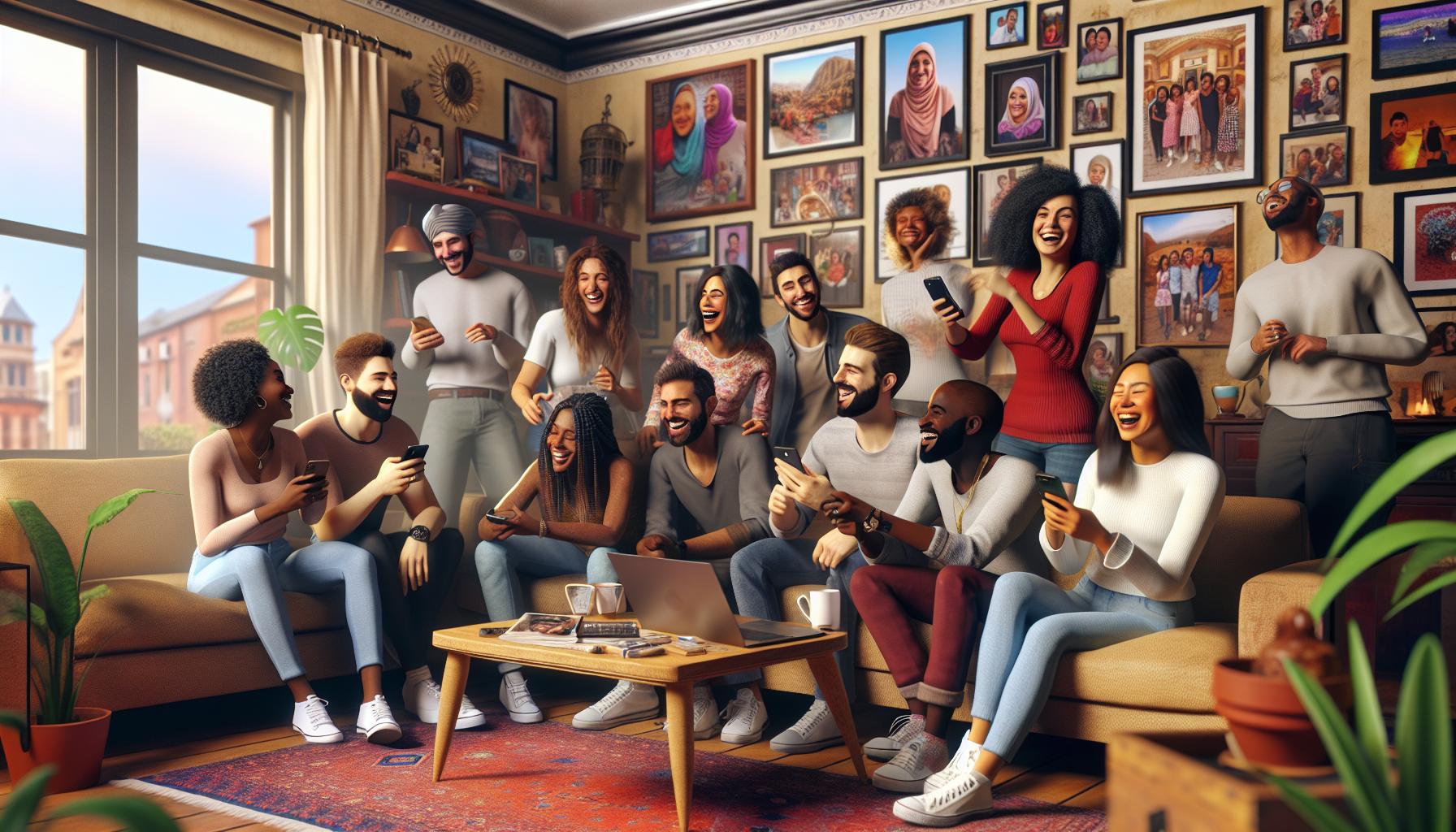In today’s digital age, social media has transformed the way people communicate. With platforms like Facebook, Twitter, and Instagram, individuals can share thoughts and experiences instantly, bridging gaps that once seemed insurmountable. This shift has not only changed personal interactions but also influenced professional relationships and public discourse.
However, the impact of social media on communication is a double-edged sword. While it fosters connectivity and engagement, it can also lead to misunderstandings and a decline in face-to-face interactions. As society navigates this new landscape, understanding the nuances of social media’s influence becomes crucial for effective communication in both personal and professional realms.
Key Takeaways
- Transformative Impact: Social media has fundamentally changed communication by facilitating instant sharing and connecting individuals globally, overcoming geographical barriers.
- Communication Styles: The digital environment encourages informal language and rapid exchanges, which can lead to misunderstandings and less thoughtful interactions.
- Loss of Non-Verbal Cues: In the absence of body language and tone, digital communication often relies on emojis and gifs, risking emotional depth and understanding in conversations.
- Professional Dynamics: Social media enhances collaboration and connectivity in workplaces while also posing challenges related to informality and misinterpretation of messages.
- Relationships Affected: Social media enables easy building and maintaining of relationships, but it may also lead to superficial connections that lack emotional intimacy.
- Balancing Act: Users must navigate the advantages and drawbacks of social media by balancing online interactions with face-to-face communication to maintain deeper connections.
How Social Media Affects Communication
Social media consists of various online platforms that facilitate interaction among users. Popular platforms include Facebook, Twitter, Instagram, LinkedIn, and TikTok, each serving unique functions for different demographics. These platforms enable users to create, share, and access content instantly, which has fundamentally changed communication practices.
Social media allows individuals to connect with a global audience, breaking geographical barriers. Users can share personal updates, news articles, educational material, and multimedia content easily. Interaction often occurs through comments, shares, and likes, fostering a sense of community.
Social media also enables businesses to engage with customers directly. Brands use platforms for marketing, customer service, and gathering feedback. Short customer response times create a more interactive and responsive relationship between businesses and consumers.
Despite its advantages, social media presents challenges. Miscommunication can arise from the absence of nonverbal cues, like tone or body language. Additionally, the overuse of digital communication may contribute to reduced face-to-face interactions, diminishing personal relationships.
Understanding the nuances of social media enhances communication effectiveness. Users can navigate its complexities to leverage social media’s strengths while minimizing drawbacks.
Impact on Interpersonal Communication

Social media profoundly influences interpersonal communication, altering how individuals interact and connect. This impact reflects changes in communication styles and the role of non-verbal cues in digital interactions.
Changes in Communication Styles
Changes in communication styles arise from the shift to online platforms. Individuals often express themselves using abbreviations, emojis, and multimedia, adapting messages for brevity and engagement. This evolution leads to a rise in informal language, which may hinder professional discourse if not monitored. Moreover, the constant connectivity enables quicker exchanges; however, it also promotes less thoughtful responses. People prioritize reaction over reflection, leading to rushed conversations and potential miscommunication.
Non-Verbal Cues in Digital Communication
Non-verbal cues serve as critical components in traditional communication but become limited in digital formats. Lack of facial expressions, tone, and body language can create misunderstandings. Users often rely on emojis or gifs to convey emotions, but these may not always achieve the intended clarity. Consequently, digital communication risks reducing emotional depth in interactions. The absence of physical presence can weaken personal connections, necessitating a conscious effort to enhance communication effectiveness.
Effects on Professional Communication

Social media significantly influences professional communication, affecting how organizations and individuals interact. This impact includes both enhanced collaboration and notable challenges in workplace communication.
Collaboration and Connectivity
Collaboration among teams thrives in a social media landscape. Platforms like Slack and Microsoft Teams facilitate real-time communication, enabling team members to share ideas and updates instantly. Social media enhances cross-departmental collaboration, allowing employees to connect beyond traditional hierarchies. The accessibility of platforms fosters a sense of community, leading to improved project alignment and innovation. As a result, professionals can engage in discussions that enhance creativity and streamline processes across geographical boundaries.
Challenges in Workplace Communication
Despite its advantages, social media poses several challenges to workplace communication. The informal tone prevalent on these platforms can blur professional boundaries, leading to misunderstandings. Abbreviated language and informal expressions might diminish the seriousness of professional discourse, creating confusion regarding intent. Furthermore, rapid communication encourages quick responses, often at the expense of thoughtful consideration, resulting in increased errors and misinterpretations. The lack of non-verbal cues, such as tone or body language, can exacerbate these issues, making it difficult to gauge intent or emotion.
Influence on Relationships

Social media significantly shapes relationships, enhancing connections while also presenting challenges. The dynamics between individuals, families, and friends are increasingly influenced by online interactions.
Building and Maintaining Relationships
Social media allows users to build and maintain relationships effortlessly. Platforms facilitate connection through direct messaging, group chats, and status updates. People can share life events, achievements, and memories instantly. In fact, 73% of adults believe social media enhances their ability to connect with friends, as reported by the Pew Research Center. Regular interaction on platforms like Facebook or Instagram keeps relationships alive, especially among long-distance friends. Yet, reliance on virtual communication can lead to superficial connections, where depth and emotional intimacy may suffer.
Effects on Family and Friend Dynamics
Social media affects family and friend dynamics in various ways. For families, it provides opportunities for shared experiences through photos and videos, fostering a sense of togetherness despite physical distance. According to a survey by Lifeway Research, 30% of families engage in joint online activities, such as group chats or video calls. Friendships can also shift, with social media influencing group dynamics, such as inclusion and exclusion. Cyberbullying and online conflicts can arise within friend groups, impacting real-life relationships. Consequently, while social media can strengthen connections, it can also introduce tension, requiring users to balance online interactions with face-to-face time.
Social Media’s Impact on Communication
Social media’s impact on communication is profound and multifaceted. While it fosters connections and enhances engagement in both personal and professional spheres, it also introduces challenges that can hinder effective interaction. The shift towards informal language and quick exchanges can lead to misunderstandings and a lack of emotional depth.
Navigating this complex landscape requires awareness of the nuances in digital communication. By understanding both the benefits and drawbacks of social media, individuals and organizations can cultivate more meaningful interactions. Embracing the strengths of these platforms while remaining mindful of their limitations will ultimately lead to more effective communication in an increasingly connected world.